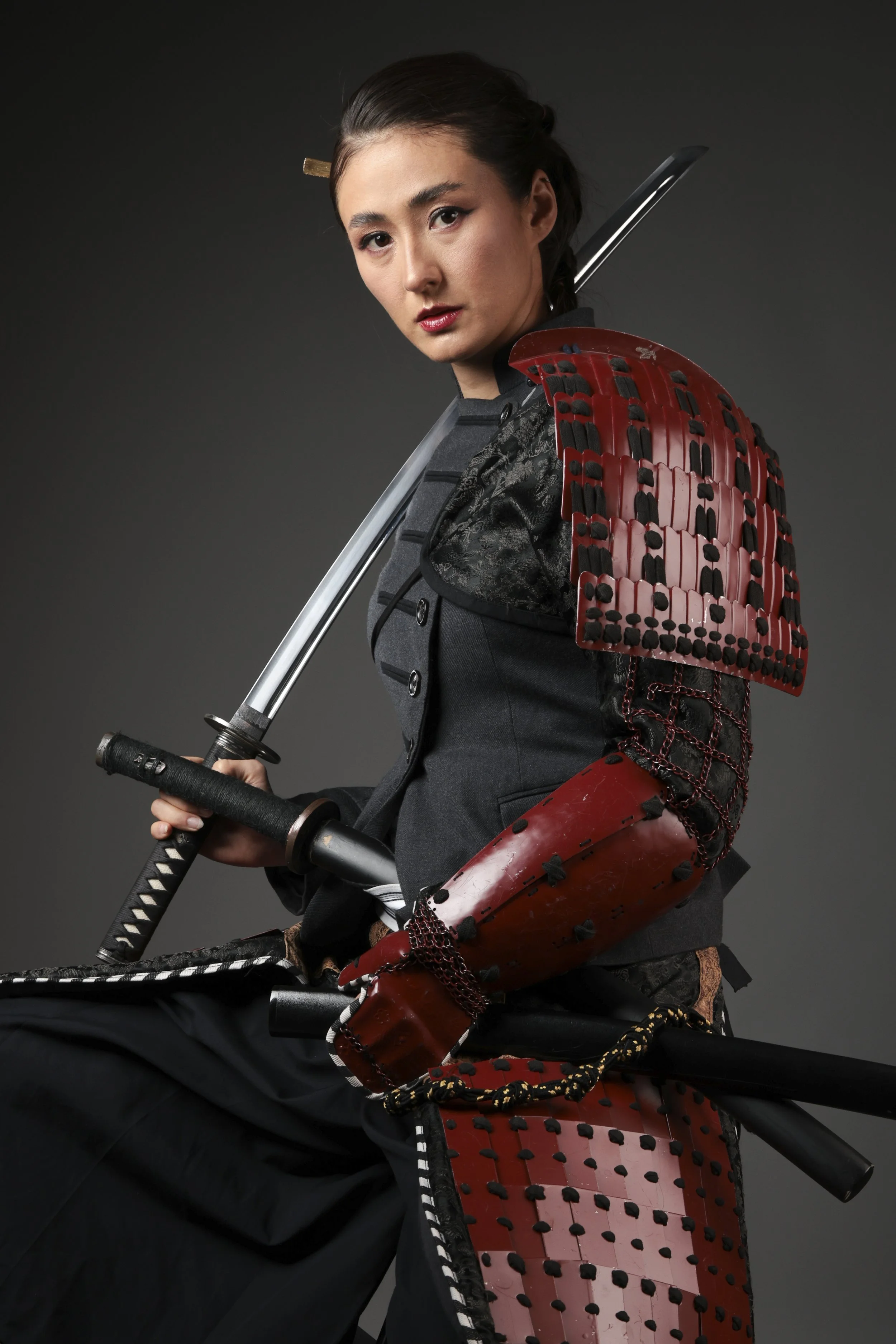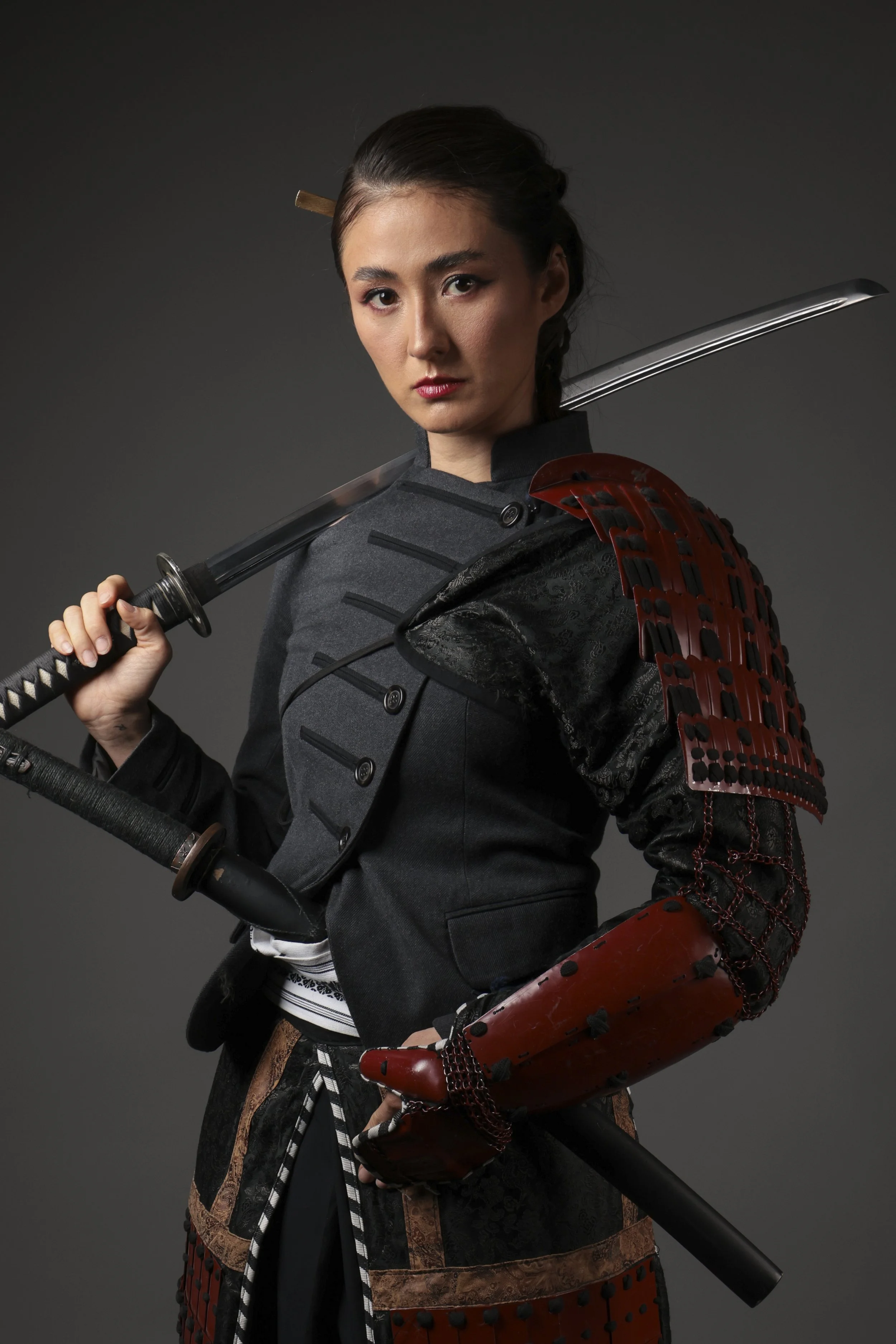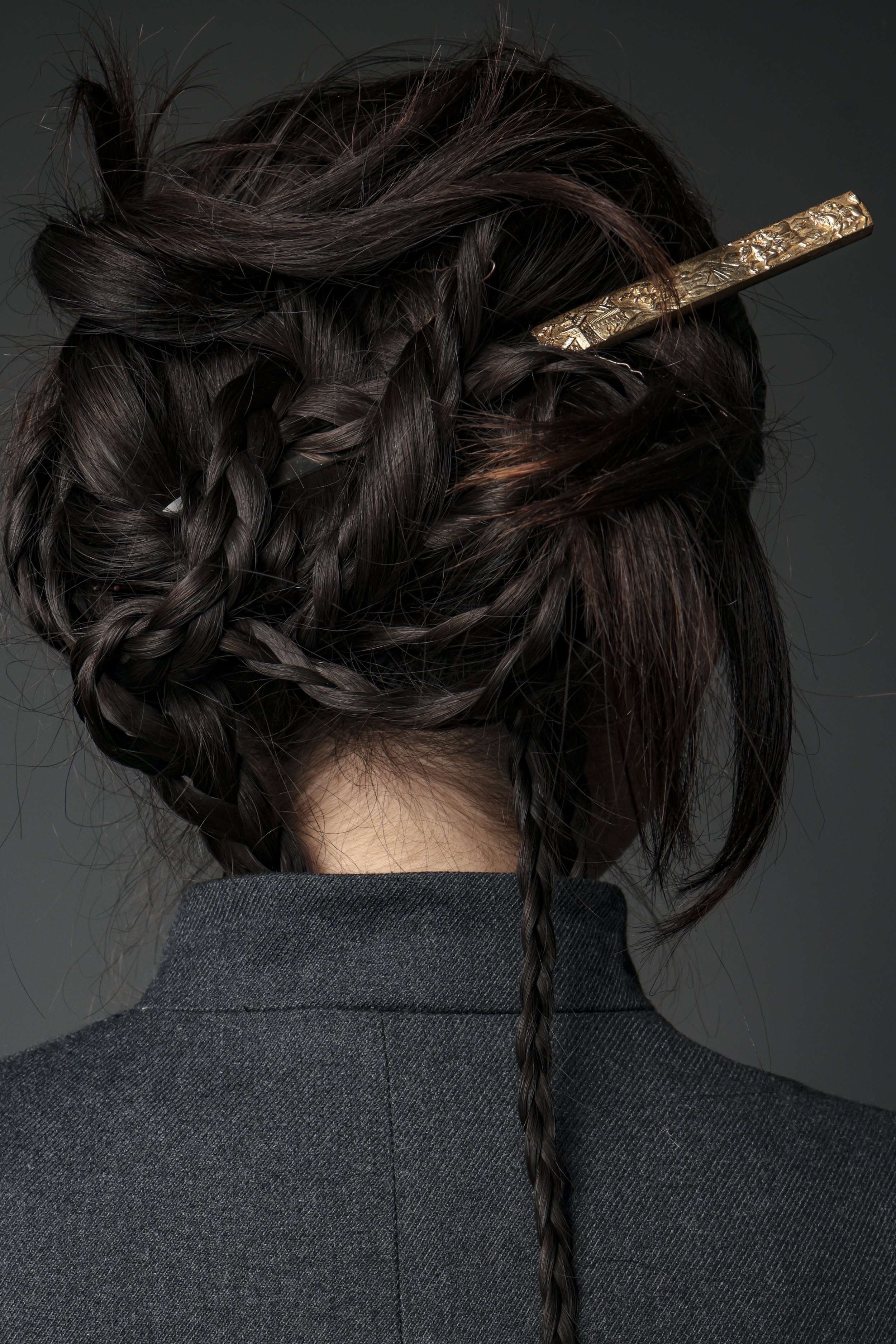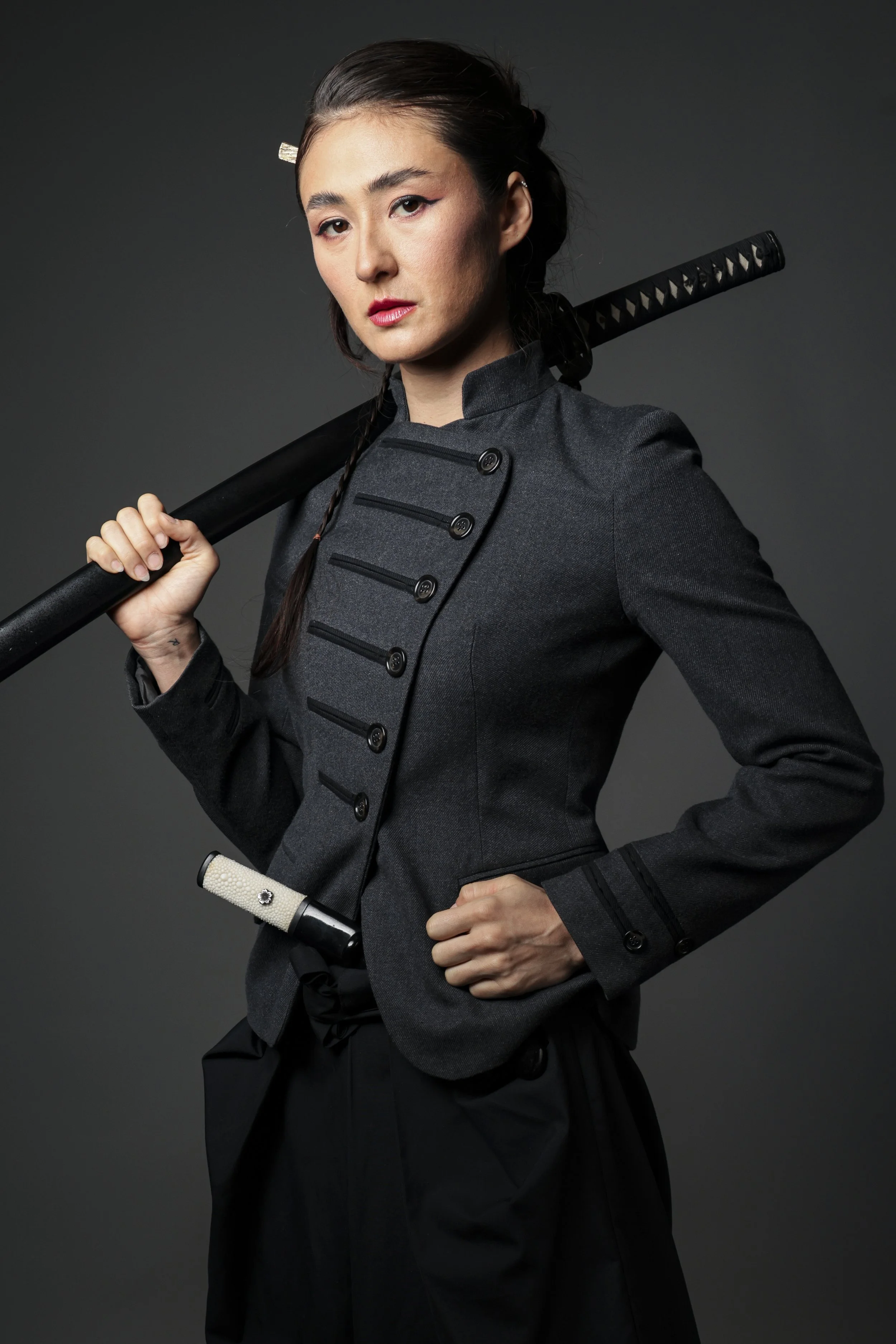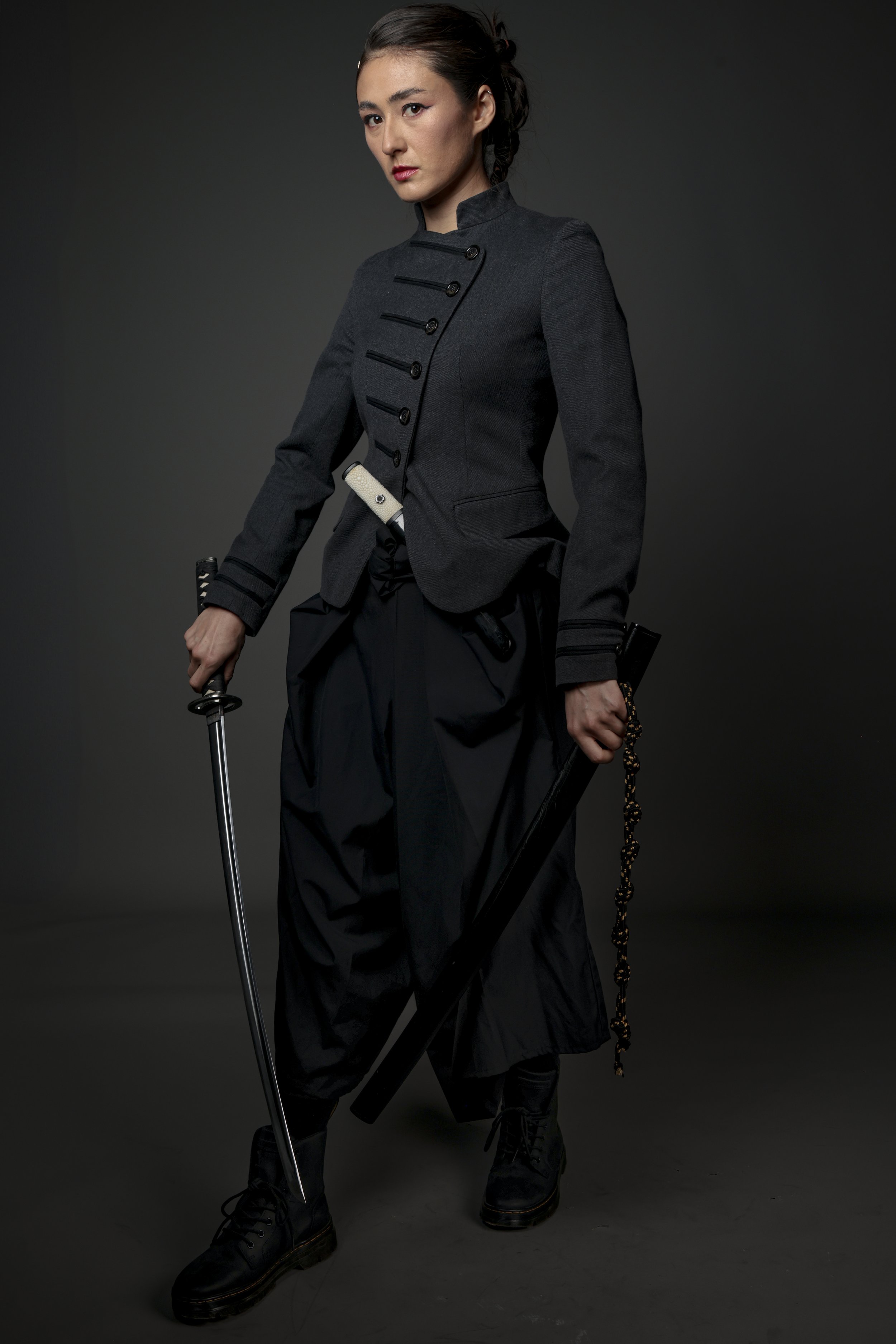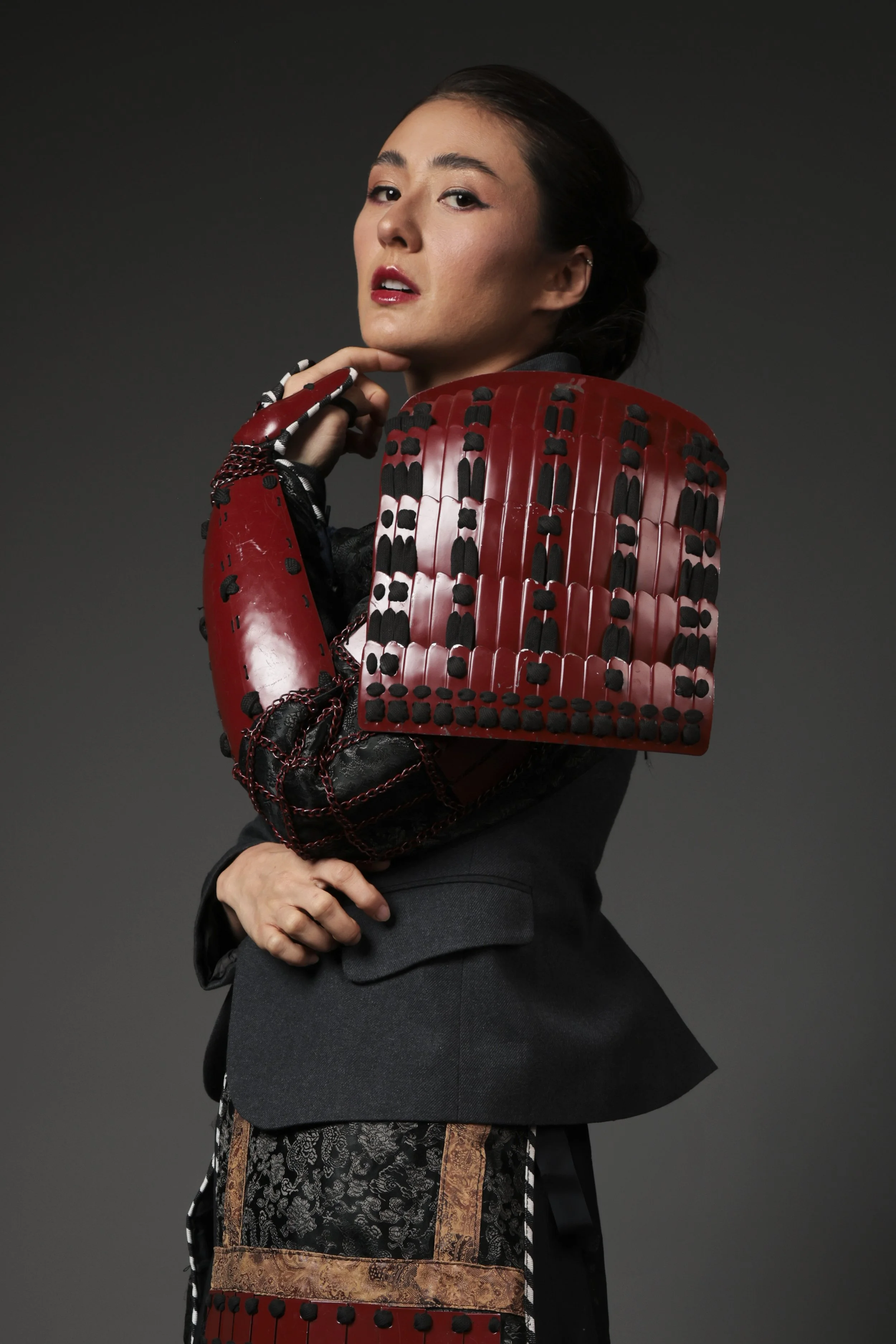from tradition to fashion
ONNA MUSHA
This shoot reimagines the Onna Musha to reflect the changing role of women in Asian society. Traditionally seen in kimono, not armour, women are here styled in yoroi-inspired elements, hakama, and a militant jacket. The contrast of heritage and modernity symbolises resilience, autonomy, and the breaking of patriarchal boundaries — a dialogue between strength and vulnerability.
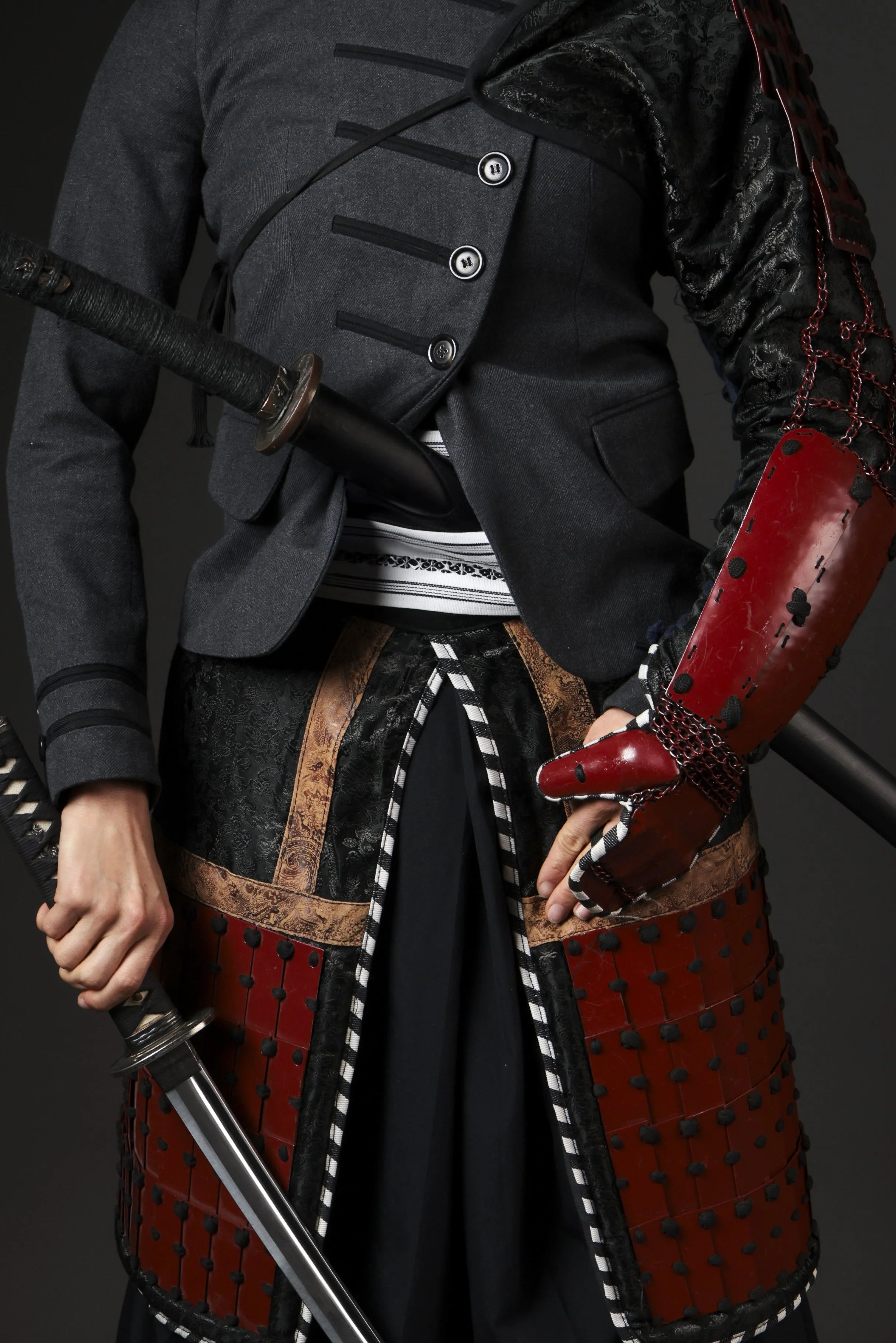
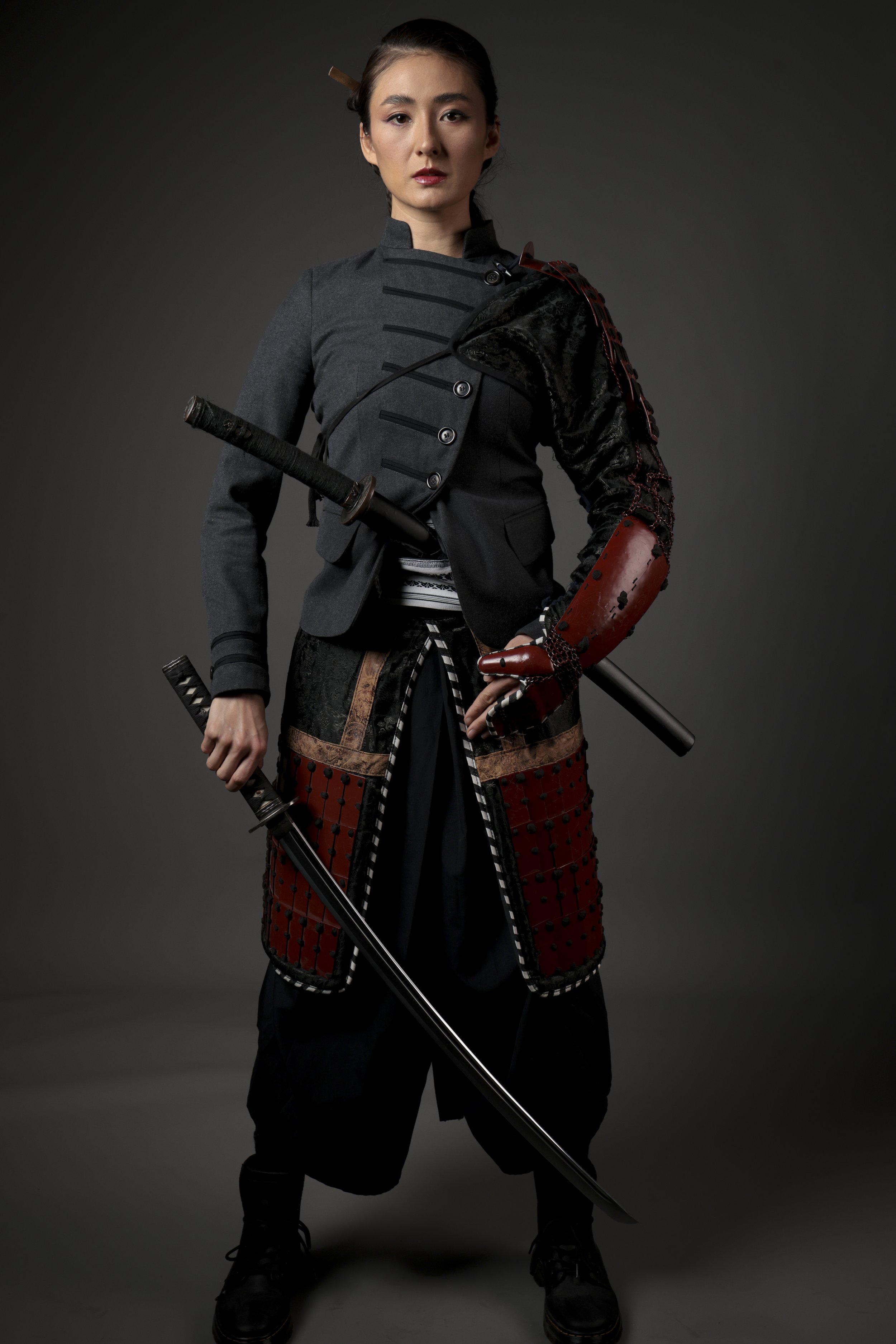

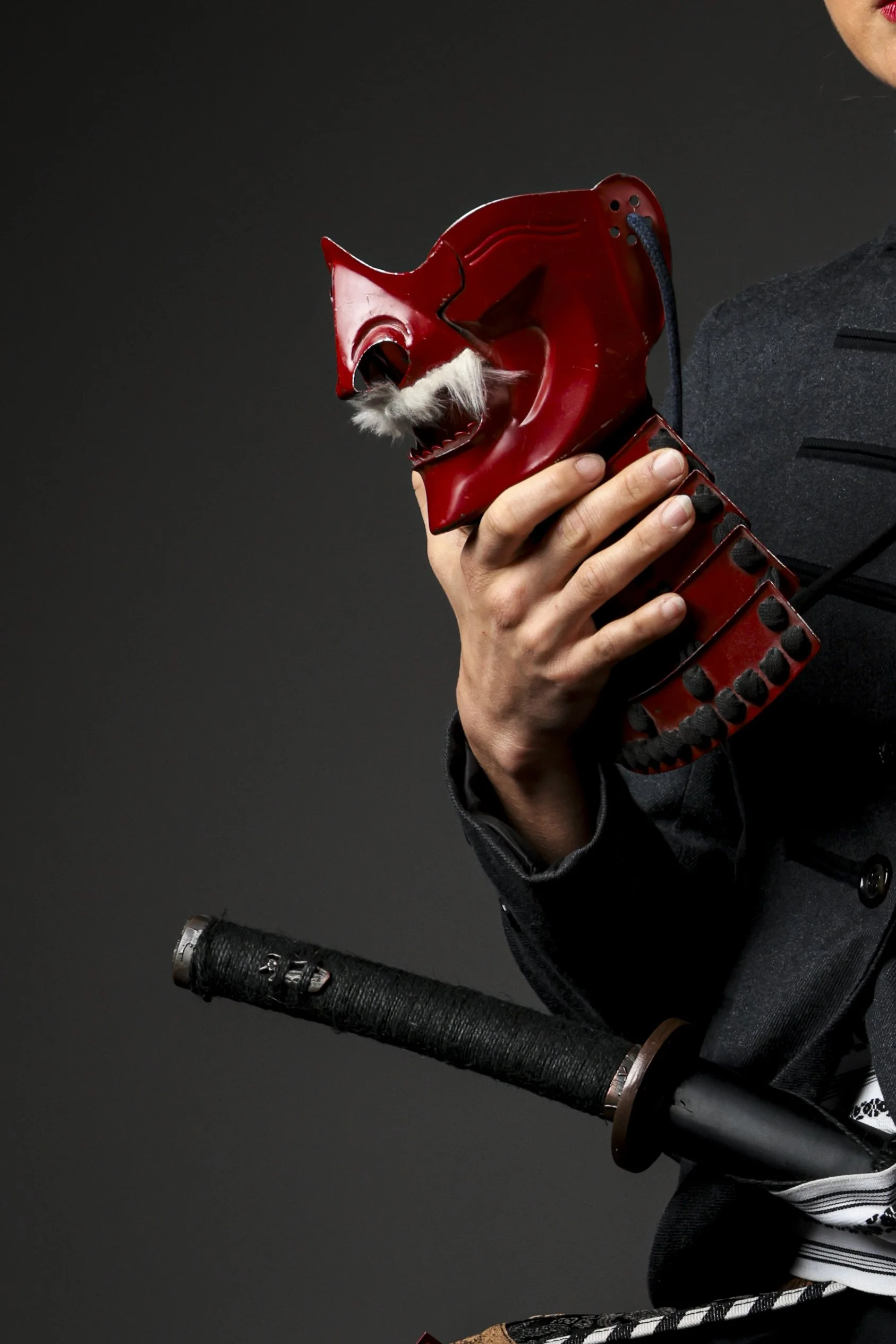
The Evolution of Tradition
In feudal Japan, women were rarely seen on the battlefield. Their imyoroias tied to the elegance of the kimono, while armour remained the domain of men. Though there were women warriors, known as Onna Musha, they were often relegated to defending the household rather than shaping the larger theatre of war. The yoroi, with its steel and silk construction, became a symbol of masculine power — both protective and restrictive.
This shoot challenges that framing. By placing a female model within the visual language of armour, the story asks: What does it mean when the garments of war become an aesthetic of fashion? Here, armour is not worn to shield the body but to reflect an inner resilience.
A Ronin Reimagined
The heroine of this editorial is imagined as a ronin — masterless, autonomous, and uncompromising. She wears the hakama, a garment rooted in tradition, paired with a minimalist, militant jacket that signifies modern authority. Together, they create a dialogue between heritage and contemporary identity: a woman who honours the past but is unbound by it.
The styling is deliberate. The absence of full armour suggests that protection is no longer physical, but symbolic. Strength lies in restraint; vulnerability in the rigid. The sword, traditionally an instrument of violence, becomes metaphorical — a weapon of words, image, and status.
Breaking the Hierarchy
At the heart of this narrative is the shifting role of women in Asian society. Once confined to the softness of cultural expectation, women now embody strength that is both visible and unyielding. By merging militant aesthetics with traditional dress, the editorial reflects a broader cultural movement: the breaking of patriarchal hierarchies and the emergence of female autonomy in spaces once denied to them.
This is not about borrowing power from men’s armour; it is about redefining power itself. The heroine wears fragments of tradition as part of her image, not as a limitation. She carries the weight of history yet steps into modernity with authority.
Brutalism and Softness
The visual direction of the shoot underscores this duality. Set against a grey backdrop, the styling is stark and brutalist, stripped of excess. Yet the posing introduces softness — gestures that hint at vulnerability within the armour. It is in this interplay that strength is redefined: not in the absence of vulnerability, but in the embrace of it.
A New Identity
Onnamusha Ronin is more than a fashion statement; it is a meditation on identity, tradition, and change. The heroine is not simply dressed for war — she is dressed for the modern battlefield of perception, where resilience, autonomy, and cultural memory intersect.
This editorial does not reconstruct the past but reframes it, transforming garments once tied to battle into symbols of a woman who yields to no master but herself.
Credits:
Photographer/Concept: Joshua Diao
Model: Nalani Wakita
MUA/Hair: Akira Isola


